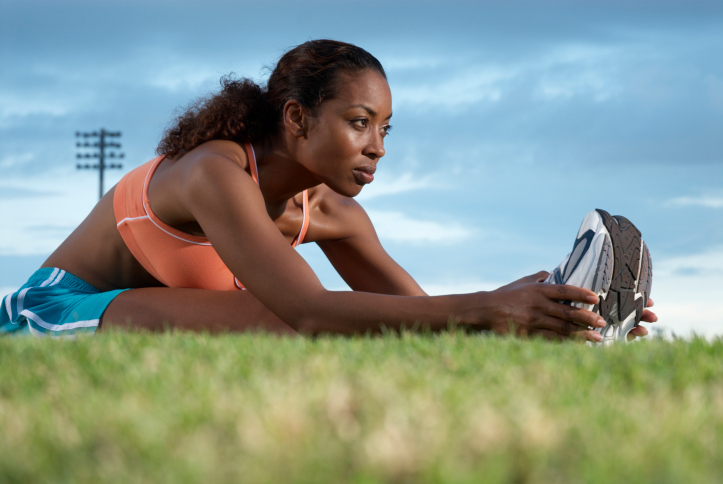
Stretching is an important part of any exercise routine when it done correctly. Done wrong, however, and it can actually cause injuries. Read on to learn how to stretch safely.
Why Should I Stretch?
Stretching your muscles safely can increase your flexibility, reduce the risk of injury, and provide pain relief associated with exercise. Because most aerobic and strength training programs naturally cause the muscles to contract and flex, it is important to lengthen, or stretch, the muscles afterwards.
Benefits of Stretching
Regular stretching after exercise can provide you with a range of benefits. These include:
• increased flexibility
• better range of motion in your joints
• increased circulation
• improved posture
• stress relief
• improved balance
• improved coordination
• promotes relaxation
• reduces anxiety and muscle tension
• lowers blood pressure and breathing rate
How to Stretch Safely
To stretch safely, it is important that you keep each stretch gentle. Breathe freely as you perform each stretch, and try not to hold your breath. Do not bounce as you stretch or hold a painful stretch. You should expect to feel tension when you are stretching but if you feel pain, you have gone too far. Always warm up first before doing stretches as stretching cold muscles may cause injuries.
Tips for Stretching
Here are some tips to help you get the most out of stretching:
• stretch at least three times a week – this will help you maintain flexibility
• stretching sessions should last from 10 to 20 minutes with each stretch held for at least ten seconds and repeated about four times
• stretch before exercising or playing sport to prevent injury and improve performance
• as well as stretching the major muscle groups, stretch the specific muscles required
• stretches should be gradual and relaxed
• focus on the muscle groups you want to stretch
• if there is pain, stop
• stretch after exercising to stop muscles from tightening up
A Stretching Routine
There are many stretches out there that you could choose to use but here are some sample stretches for you. Tilt your head forward and roll it from left to right and then right to left. Breathe deeply as you do so. Then, put your arm on your chest and grab your forearm with your opposite arm. Pull the arm until you feel the shoulder being stretched. Push the arm being stretched the opposite way if you feel the chest stretching instead of the shoulder. Extend your arms in front of you and join both hands together and cross your fingers. Push your arms further and try to push the shoulder blades in opposite directions. Next, lift one arm over the head, bent at the elbow. Hold the elbow with the opposite hand and gently pull your arm. This should result in a stretch along your side. Repeat on the opposite side.
Next, stand upright and tall, and pull one leg behind you and hold. Breathe deeply. Repeat with the other leg. For the calf, stand approximately one foot in front of a wall. Place your arm against the wall while bringing one leg in towards the wall, while keeping the legs straight. Your body should be at a 45 degree angle. Repeat with the other leg. Next, sit on the floor and stretch both legs in front of you. Gently bend at the waist and stretch only as far as your arms will reach. Keep the knees flexible. The goal of this stretch is to stretch the lower back, thighs and calves. Open your legs in the shape of a v and bend slowly towards the right leg and then bend towards the left leg. To stretch the lower back, lay flat and fold one leg into the chest and hold. Repeat with the other leg. Then bring both legs in at the same time and hold.
Originally published on Dec 09, 2008








